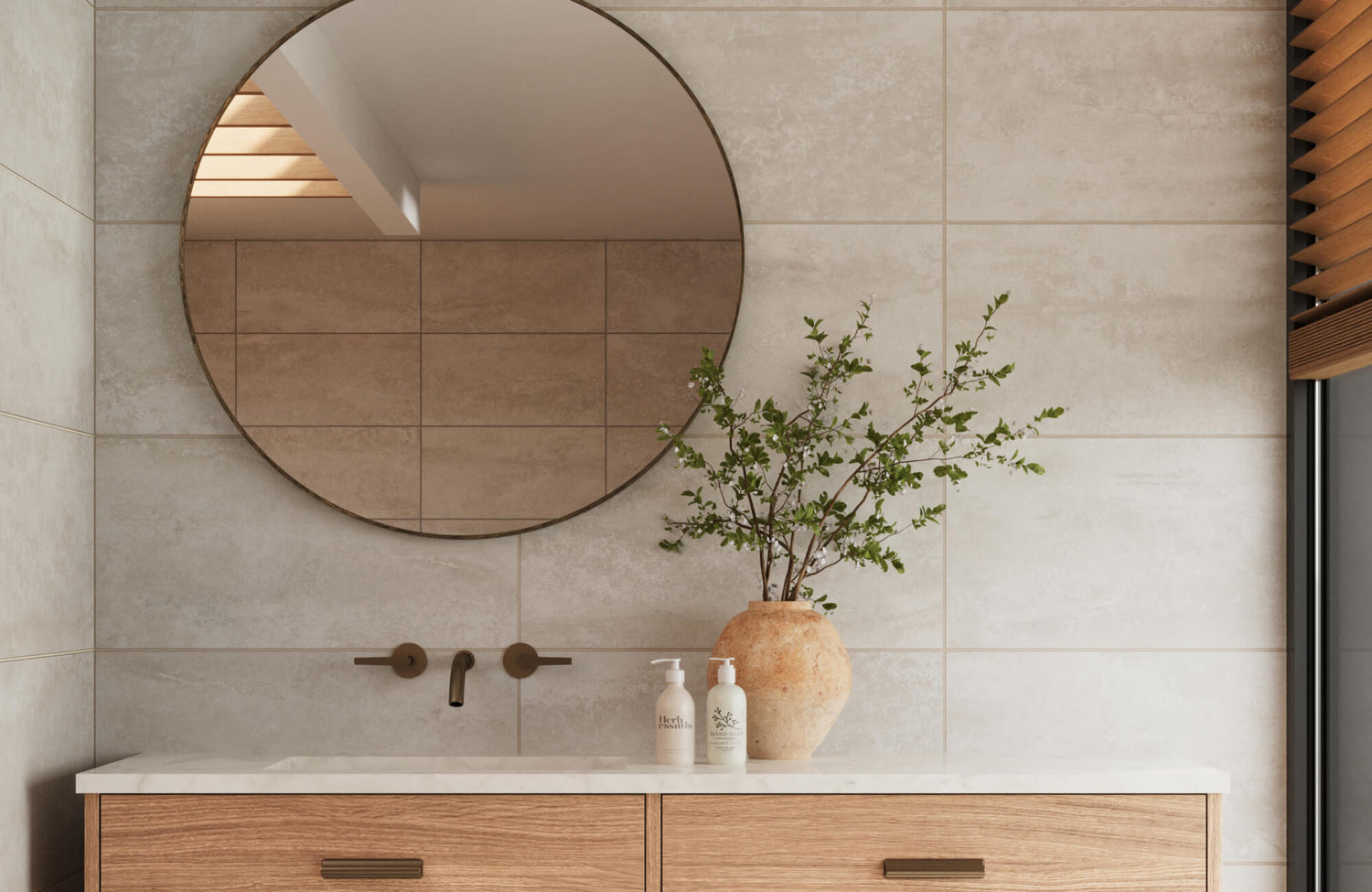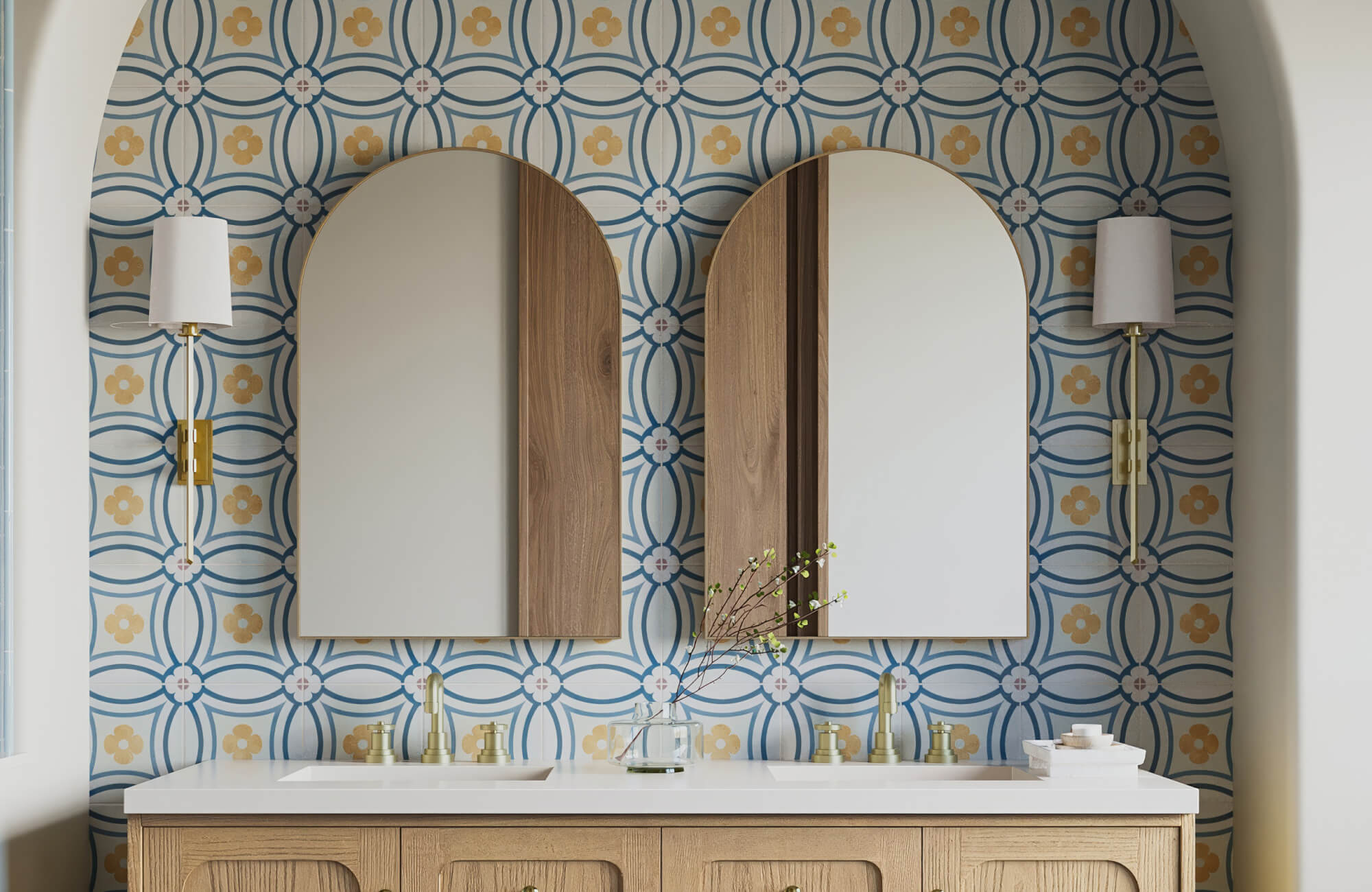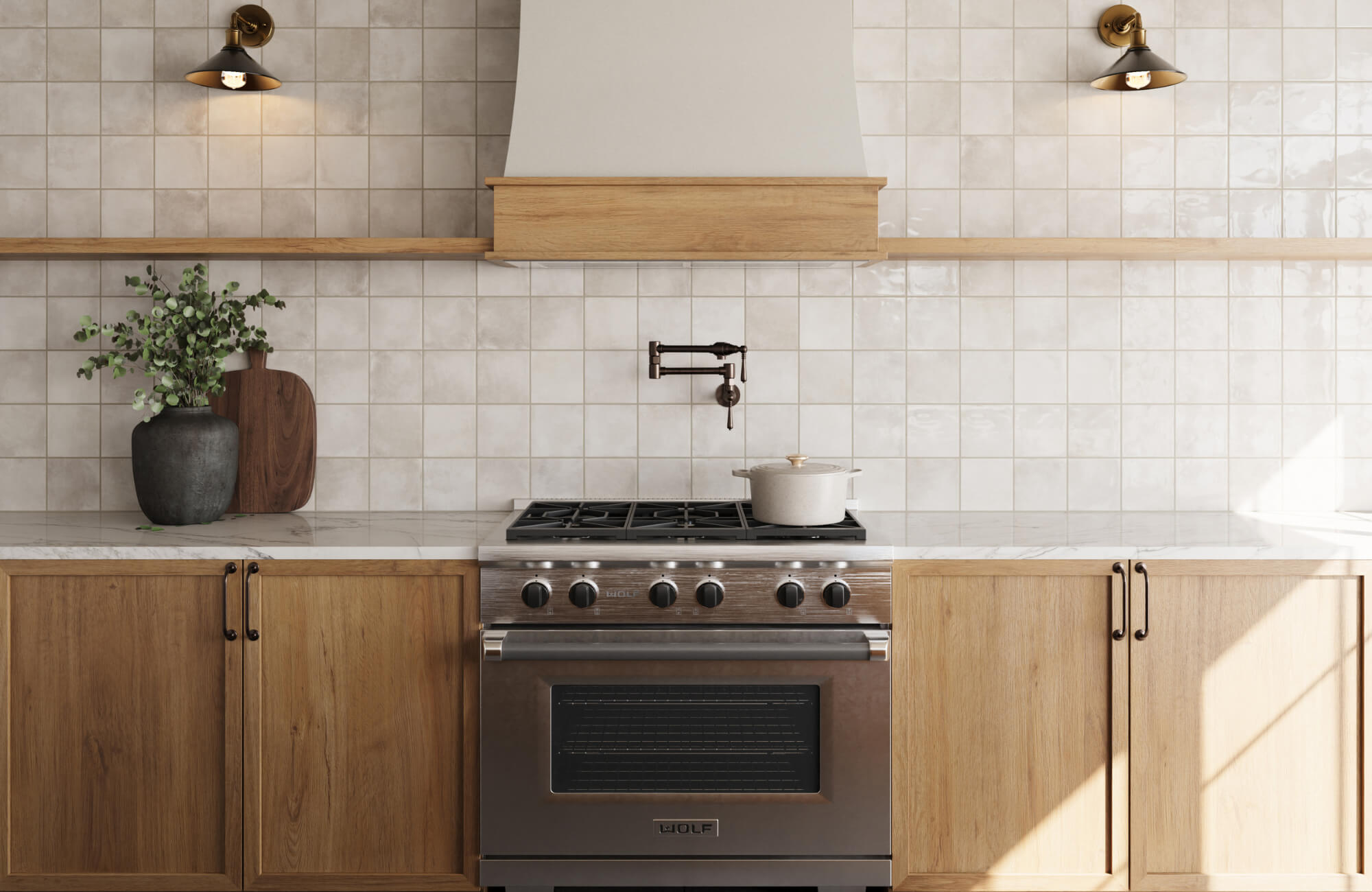In the world of contemporary bathroom design, large format tiles have emerged as a defining element of understated luxury. Their broad, uninterrupted surfaces introduce a seamless visual rhythm that transforms ordinary spaces into refined sanctuaries. By minimizing grout lines and amplifying surface continuity, these tiles invite a sense of calm, spaciousness, and architectural clarity. They speak to both minimalists and maximalists: those who appreciate clean simplicity and those who prefer bold material expressions. With finishes that echo natural stone, textured concrete, or polished porcelain, large tiles balance aesthetic impact with practical performance. In this article, we explore their nuanced benefits and considerations, helping you envision a bathroom that is as enduring as it is exquisite.

Aesthetic and Visual Impact
Large tiles dramatically elevate the visual sophistication of bathrooms by minimizing grout lines and maximizing surface uniformity. Their expansive design reduces visual fragmentation, creating a refined, uninterrupted backdrop that enhances both minimal and luxurious styles.
Surface Continuity and Elegance
Large tiles provide a smooth, unbroken visual field that contributes to a cohesive, spa-like ambiance. The reduced presence of grout lines eliminates visual distractions, allowing the material to shine in its purest form. This continuity works especially well in contemporary and minimalist bathrooms where simplicity is key. When combined with rectified edges, the transition between tiles becomes nearly imperceptible, creating a polished, architectural finish. The larger surface area also helps draw attention to the room’s structural geometry, enhancing wall and floor symmetry. This sense of uniformity lends a luxurious and bespoke quality that elevates the entire space.
Material Expression and Texture Clarity
One of the primary advantages of large tiles is their ability to showcase intricate patterns and veining with minimal interruption. High-resolution prints and natural stone imitations benefit greatly from large surfaces, as their detailing appears more authentic and dramatic. Marble look porcelain tiles, for instance, reveal rich vein dynamics across a single tile without abrupt grout breaks. This amplifies the realism of high-end materials while retaining the functional benefits of ceramic or porcelain. Textured finishes, such as travertine look or slate, appear more dimensional and tactile when uninterrupted. As a result, the tiles not only serve a functional role but also become central to the room’s aesthetic narrative.
Design Versatility Across Styles
Large format tiles are surprisingly versatile, complementing a range of design themes from industrial chic to Scandinavian serenity. Their adaptability comes from a vast array of finishes, tones, and material effects that can be tailored to suit almost any stylistic vision. Neutral tones like dark gray, ivory, and soft greige serve as adaptable bases, allowing fixtures and accent pieces to pop.
A perfect example is Edward Martin’s Shea 24x48 Matte Porcelain Tile in Dune. As displayed in the photo above, it grounds the bathroom space with a soft, beige hue that enhances the warmth of the wood vanities and the elegance of black-accented mirrors and fixtures. The tile’s expansive matte surface also creates a serene, natural flow that unifies the room while letting focal elements like the freestanding tub and green tiled shower shine. This wide design applicability makes large format tiles a favorite among interior designers seeking both beauty and practicality.

Spatial Perception and Scale Compatibility
Large tiles can manipulate visual perception, making small bathrooms feel more open and spacious when chosen and installed with scale sensitivity. Strategic layout planning ensures these oversized tiles work with, not against, the room's proportions.
Visual Expansion in Compact Bathrooms
Contrary to common belief, large tiles can make small bathrooms appear larger when used strategically. Their broad surface area reduces the number of visual interruptions, creating a more seamless and expansive visual plane. Light-colored large tiles, in particular, reflect natural and artificial light more effectively, brightening the space and adding a sense of openness.
A beautiful example is the Brody 24x24 Checkerboard Matte Porcelain Tile in Sand and Dune, which artfully combines two tonal neutrals to form a playful yet refined pattern that visually elongates the floor. As shown in the picture above, the checkerboard layout adds depth and dimension without overwhelming the serene palette, proving that even in compact spaces, scale and design can coexist with elegance. When installed on both walls and floors, large tiles like these create continuity that visually widens the room, especially when paired with subtle grout lines and unified tones.
Proportion and Layout Optimization
Scale matters. Choosing tiles that are too large for a cramped space can lead to awkward cuts and imbalanced aesthetics. A key step in avoiding this is to assess the room’s dimensions and map out a layout using digital design tools or dry-lay methods. Patterns like linear stack or offset brick can be selected based on whether uniformity or movement is desired. Laying the tiles parallel to the longest wall often enhances the room’s natural flow and sense of length. Corner placements and focal points, like vanities or freestanding tubs, should also guide tile alignment. This ensures the tiles work in harmony with the room’s architecture rather than competing against it.
Grout Line Minimization for Unity
The use of color-matched grout in conjunction with large tiles minimizes visual seams and enhances continuity. Narrow grout joints, often as slim as 1/16 inch, create the illusion of a monolithic surface. This technique not only elevates the modern feel but also reduces the grid-like effect that smaller tiles tend to create. When applied across walls and floors, this method blurs the line between different planes, visually expanding the space. This technique is especially useful in bathrooms with open showers or glass partitions, where visual flow is crucial. By integrating tile and grout color, designers can achieve a more cohesive, calming atmosphere.
To further support confident design decisions, Edward Martin offers an intuitive augmented reality (AR) tool that allows you to visualize large format tiles in your own bathroom before committing. This interactive experience brings the scale, color, and layout of your selected tiles to life within your space, helping you assess proportions, coordinate finishes, and ensure the perfect fit from every angle.

Installation Complexity and Substrate Requirements
Though aesthetically superior, large tiles require rigorous substrate preparation, precise tools, and skilled labor to avoid technical pitfalls such as lippage and delamination. Achieving a flawless finish with large format tiles is a highly technical process, where every millimeter matters, making professional installation not just recommended but essential.
Substrate Flatness and Preparation
Large format tiles demand near-perfect flatness of the underlying surface, as any deviation can result in tile edges protruding unevenly—a condition known as lippage. Industry standards (ANSI A108) allow no more than 1/8-inch variation over a 10-foot span. Achieving this often requires self-leveling underlayments or mortar beds, which add time and cost to the project. A properly prepared substrate ensures full mortar contact and long-term adhesion. Uneven subfloors not only compromise visual results but can also lead to structural failure over time. Therefore, surface preparation is a critical stage that should never be rushed or overlooked.
Mortar Selection and Application Techniques
Not all adhesives are suitable for large tiles. Because of this, installers must use LHT (Large and Heavy Tile) mortar, formerly known as medium-bed mortar. This specially formulated mix provides the body needed to support heavier, thicker tiles without slumping. Troweling techniques like directional troweling and back-buttering each tile also ensure full coverage and eliminate air pockets. These steps are especially important in wet areas, where improper bonding can lead to water infiltration or detachment. A minimum mortar coverage of 95% is recommended for floor tiles in wet environments. When applied meticulously, these methods guarantee both structural performance and aesthetic excellence.
Tile Handling and Cutting Tools
The sheer size and weight of large tiles make handling more difficult and prone to damage. Specialized tools like large format tile cutters, suction lifters, and leveling systems are essential to prevent breakage during transport and placement. Installers often work in teams to position and adjust each tile accurately, minimizing the risk of corner chipping. Precision is also required during cutting, especially around fixtures like toilets, drains, and pipes. Mistakes can be costly, as oversized tiles are more expensive to replace and often come in limited runs. Investing in proper tools and skilled labor is non-negotiable for achieving a professional finish.
Maintenance, Cleaning, and Grout Considerations
Large format tiles reduce the number of grout joints, simplifying routine cleaning and long-term maintenance. Their surface characteristics and joint treatments significantly impact hygiene, durability, and ease of care in humid bathroom environments.
Grout Maintenance and Mold Prevention
Grout is often the first area to show wear and discoloration in a bathroom, but large tiles mitigate this issue by requiring fewer joints. With fewer seams to absorb moisture and harbor mold, the risk of mildew is dramatically reduced. Many homeowners now opt for epoxy or urethane grout, which resists staining, water penetration, and microbial growth more effectively than traditional cementitious grout. These advanced grout types do not require sealing and offer superior color retention over time. Regular inspection and prompt spot cleaning also ensure long-term hygiene without intensive upkeep. This makes large tiles especially suitable for high-humidity areas such as walk-in showers and wet rooms.
Cleaning Efficiency and Surface Hygiene
Large tiles create expansive surfaces that are easier and faster to clean than intricate mosaics or small format options. The minimal number of grout lines means fewer crevices for soap scum, body oils, and limescale to accumulate. Smooth porcelain or ceramic finishes often feature a glazed coating that resists stains and facilitates quick wipe-downs with non-abrasive cleaners. In busy or family bathrooms, this efficiency translates into real-time savings and less frequent deep cleaning sessions. Matte finishes also help conceal water spots and minor smudges, maintaining a cleaner appearance between cleanings. This combination of beauty and low maintenance appeals to both design-conscious and practical-minded homeowners.
Durability in High-Moisture Zones
Large tiles are well-suited for high-moisture environments when supported by proper waterproofing systems. In areas like shower enclosures and tub surrounds, the underlying membrane, often a liquid-applied or sheet system, ensures moisture does not penetrate the substrate. This waterproof barrier is crucial for protecting behind-the-wall materials such as cement board or drywall. Additionally, large tiles made from porcelain are inherently non-porous, meaning they do not absorb water and are highly resistant to cracking or staining. When installed correctly, they maintain their structural integrity and finish even under frequent exposure to steam and standing water. These properties also make large tiles a reliable choice for long-term performance in wet environments.
To preserve both the appearance and performance of large format tiles in bathroom environments, it is best to follow the manufacturer’s care and maintenance guidelines. These recommendations are tailored to each tile’s specific finish, material composition, and installation context, ensuring optimal longevity and minimizing the risk of damage.
Slip Resistance and Safety Factor
While design appeal is important, bathroom surfaces must also meet safety standards, particularly concerning slip resistance. Large tiles require careful selection of finish and layout to ensure both beauty and functionality in wet conditions.
Surface Finish and DCOF Ratings
Slip resistance is quantified using the Dynamic Coefficient of Friction (DCOF), with a minimum value of 0.42 recommended for residential wet areas. Glossy tiles often fall below this threshold, making them less suitable for floors, especially in showers or around bathtubs. Matte, textured, grip, or honed finishes provide a higher-friction surface, improving traction even when wet. Some manufacturers incorporate micro-etching technology into the tile surface to increase grip without compromising appearance. These finishes are also ideal for creating a safe walking surface while maintaining a contemporary aesthetic. Choosing tiles based on their technical specifications ensures compliance with safety regulations and minimizes the risk of slips and falls.
Grout Line Traction Contribution
Grout joints can provide additional traction on tile floors, particularly in wet areas. However, large tiles with narrow grout spacing offer fewer of these interruptions, potentially reducing grip. In spaces like walk-in showers or bathroom entries, this reduced joint count may necessitate alternative safety enhancements. One strategy is to use smaller, more textured tiles for flooring while maintaining large tiles on walls for visual continuity. Another option is to apply non-slip coatings or mats in high-risk areas to increase foot stability. Balancing visual elegance with practical safety considerations is key when selecting large tiles for bathroom floors.
Slope and Drainage Considerations
Proper slope is essential in wet zones to direct water efficiently toward drains, but achieving a consistent slope with large tiles presents a technical challenge. Because they are less flexible and harder to manipulate on uneven surfaces, large tiles may create water pooling if not expertly installed. Linear or trench drains can simplify this issue by allowing a single-direction slope, reducing the need for intricate cuts. Additionally, installers often use smaller-format tiles or cut-down versions of the main tile around drains to maintain slope integrity. Precision in installation ensures both aesthetic harmony and functional drainage. Without proper slope, even the most beautiful tile floor can become a hazard and a maintenance issue.

Cost, Material Waste, and Long-Term Value
Large format tiles tend to carry higher upfront costs, but they also offer long-term value through increased durability, reduced maintenance, and enhanced resale appeal. Budgeting for both material and installation variables is essential for informed decision-making.
Material and Labor Cost Comparison
Large tiles typically cost more per square foot than standard-sized alternatives, and this premium extends to labor as well. Their size and weight require skilled handling, specialized tools, and more precise planning, all of which increase installation fees. Unlike smaller tiles, mistakes with large format pieces can be more costly, as replacement may require ordering from limited stock or custom runs. However, because fewer tiles are needed to cover the same area, material count can sometimes offset per-piece pricing. The sleek, luxurious finish often justifies the added cost for homeowners aiming for a high-end look. Factoring in both immediate expenses and visual impact is also crucial when assessing return on investment.
Resale and Design Longevity
Bathrooms finished with large tiles often enjoy a timeless appeal that contributes positively to property resale value. Their high-end appearance suggests attention to detail and quality, which are strong selling points in real estate. A prime example is our Aniston 24x48 Matte Porcelain Tile in Calacatta Quarzite, as depicted in the photo above. This tile elevates a bathroom with its elegant veining and soft matte texture. Its classic marble-inspired look also pairs effortlessly with brass fixtures and warm wood tones, making it a versatile foundation that transcends fleeting trends. This enduring design aesthetic, coupled with the tile’s durability and low maintenance, ensures that the space will remain stylish and relevant for years to come. It is an investment in both beauty and long-term value.
Waste Management and Environmental Considerations
Cutting large tiles to fit irregular spaces often leads to increased material waste, particularly in complex bathroom layouts. Offcuts from corners, curves, and plumbing fixtures may be unusable, leading to higher disposal volumes. Efficient planning, including digital design software and pre-cutting strategies, helps minimize waste. Additionally, eco-conscious homeowners can choose large tiles made from recycled materials or produced with low-emission processes. Some products even qualify for LEED credits, aligning with sustainable building goals. Responsible material sourcing and waste management add environmental value to the aesthetic and functional benefits of large tiles.
Elevating Bathroom Design with Large Tiles
Large tiles are more than a design trend—they are a statement of intentional living and elevated taste. Their seamless surfaces, refined finishes, and architectural presence bring harmony and depth to bathroom spaces of every size. Beyond their visual appeal, they offer practical benefits in durability, maintenance, and spatial enhancement. When thoughtfully chosen and expertly installed, these tiles create an atmosphere that feels both luxurious and lasting. In every sense, they embody the perfect union of timeless form and enduring function.
To truly envision how these materials will transform your space, ordering physical samples can make all the difference. Explore textures, tones, and finishes firsthand by requesting samples from Edward Martin and begin designing with confidence.









